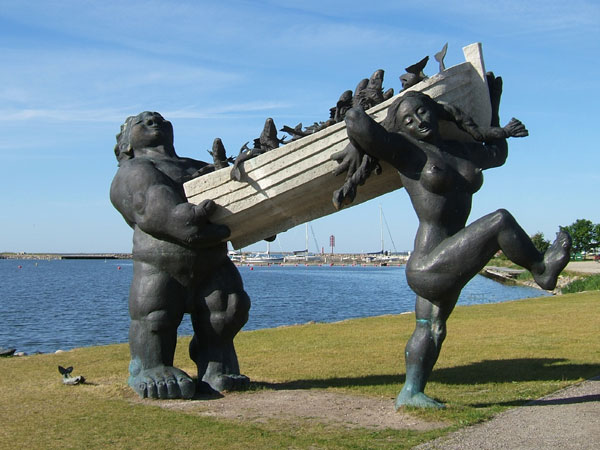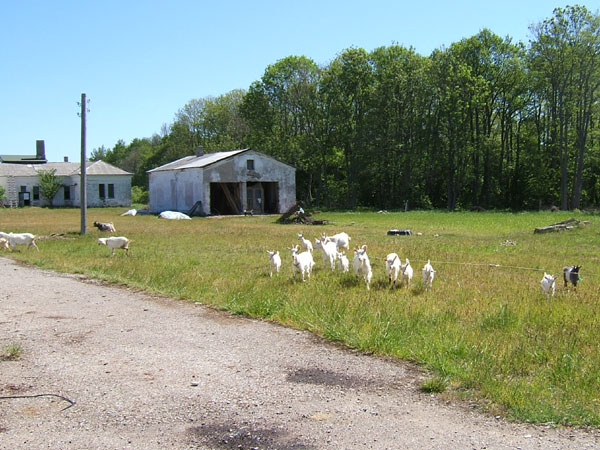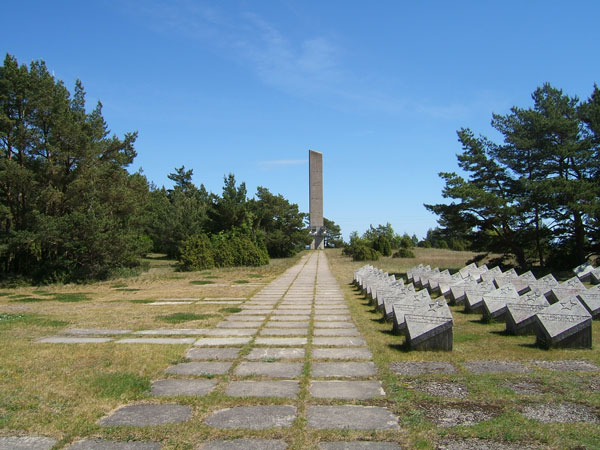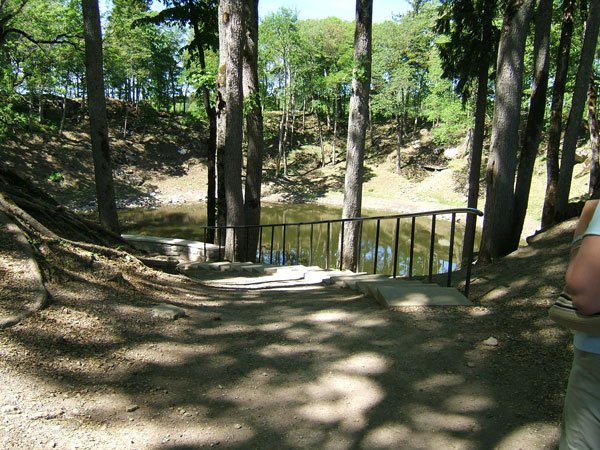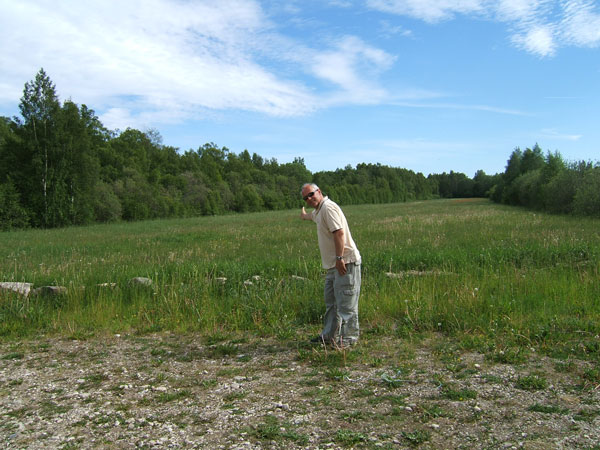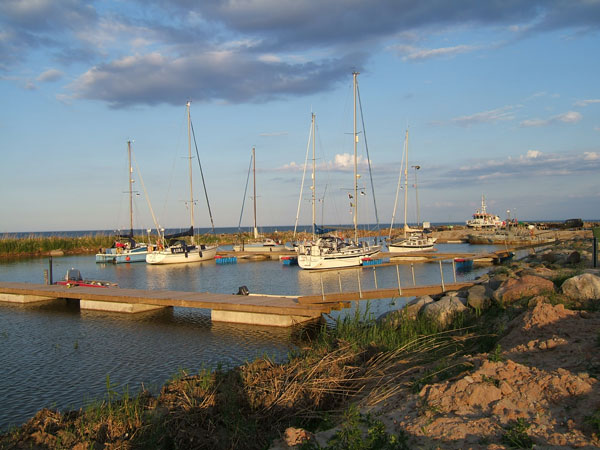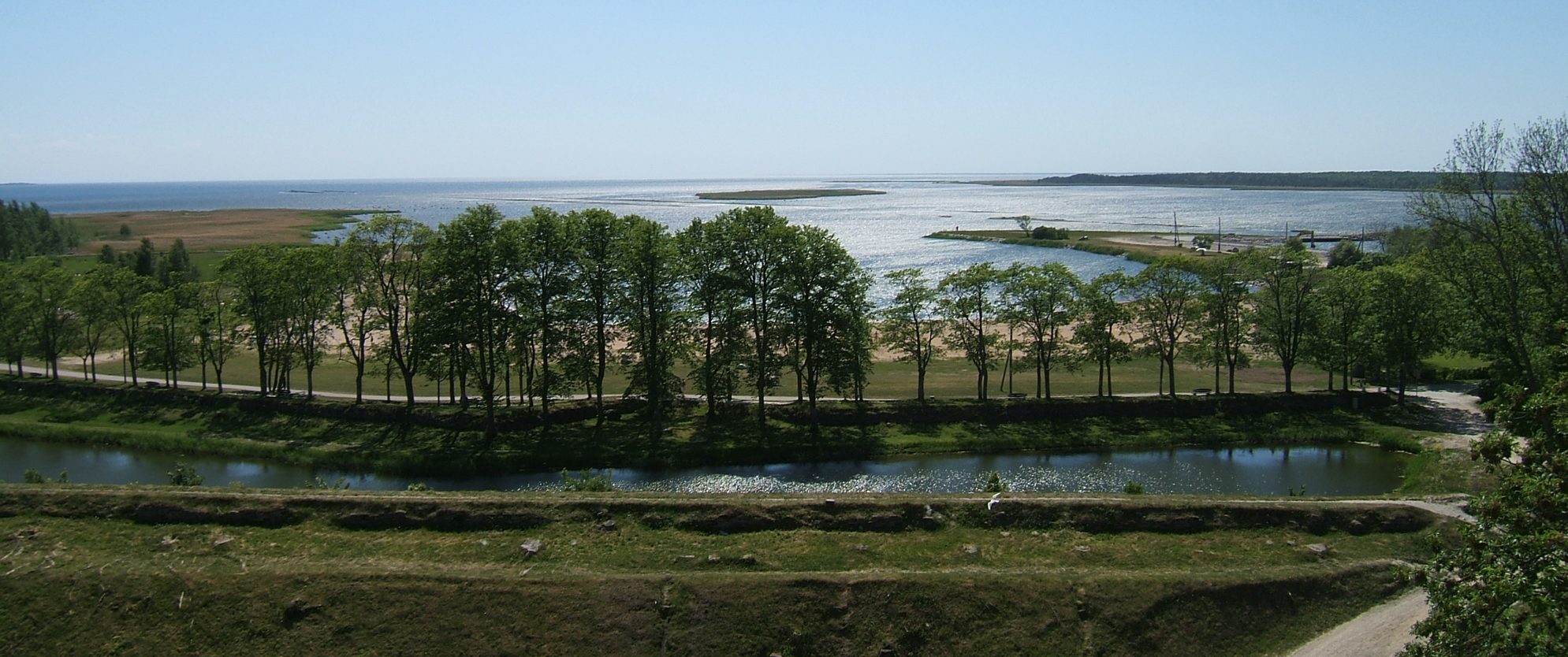
Saaremaa & Ruhnu (Estonia)
Date: June 13th to June 19th 2006
Distance : 54 miles
Weather : Lovely
Saaremaa is the largest Estonian island, and has been renowned as a holiday island ever since someone discovered the curative properties of its mud, back in the 1800s. Unfortunately however, for 30 years in the last century, it was also effectively the border between the USSR and the West, and so became the front line in the cold war.
It is difficult for us Brits, having last been invaded sometime in the 11th century, to know what occupation means. Estonians have governed themselves for only about 12 years in the last 700, and the 1940s saw first the Russians, then the Germans, and then the Russians again overrun the country. Estonia finally became independent in 1991, and has only been part of the EU since 2004. A major milestone in its history was in 2001, when it won the Eurovision Song Contest (apparently the government held an emergency meeting that night to determine whether the country could afford to host the following years event).
We tracked north from Ventspils to the capital of Saaremaa, Kuressaare. Here EU tax dollars have been put to work dredging out a 3 mile channel just so that I can moor my boat in the grounds of the castle (I'm always in favour of EU money benefiting me directly).
The channel is a bit fun, as, billed as having a depth of around 3 meters, parts of it get down to about 2.1 (not much for a boat that draws 1.7). Anyway, it a glorious spot. Near the marina is a gloriously exhuberant statue of a couple of local mythological giants. A great touch is the fish following them out of the water.
It's not fair to draw conclusions about a country from a brief visit, but I'm going to do it anyway. This part of Estonia came as a welcome piece of light relief after the industry of Ventspils. The whole area felt slightly Finnish (indeed Finns are the major visitors and are busy buying up the country) but has its own identity nevertheless. I'm pleased to see that western hair care products were much in evidence, and that the National Dress of white micro-skirt and crop top was avidly worn.
The southern part of Saaremaa is the Sörve Peninsula. The Russians and Germans have fought over this ground repeatedly, killing thousands in the process, and the road south is lined with the graves of soldiers. At the southern end of the island is an eerily abandoned Russian rocket station just quietly rotting away in the sun. Many of the graves are in a beautifully peaceful war cemetery just outside Kuararsee. Say what you like about the military, but if you are prepared to give up your life for some often senseless conflict, at least they give you a nice grave.
Another major attraction on the island is the Kaali meteorite crater. Coachloads of people flock to see this hole in the ground. Having seen that, we fancied stepping up a gear and going to see the Koigi Bog, another tourist attraction. We followed this un-signposted gravel track for about five miles before it ended in a swamp. (Estonians don't seem good on signposts - perhaps a hark back to the soviet era when they didn't want anyone moving about) Anyway, as far as we could see, the bog looked just like any other field. Apparently we missed the board walk through the bog...
The castle in Kuressaare is remarkably preserved - almost too much so. The very intactness of it spoils the effect of what should be a ruin, but its impressive nevertheless.
Despite the encouragement of the enthusiastic harbourmaster, we left Kuressaare for Ruhnu, an idyllic Estonian island bang in the middle of the Gulf of Riga. They have recently enhanced the yacht harbour here and its now an excellent destination for us yotties (More EU tax dollars for my benefit).
The island is only about 5 miles long and a couple wide. The beaches are simply stunning. At one place they have built a sauna right on the beach itself.
Trying to cycle round the island is however an unrewarding experience as most of it is sand dunes, which is like trying to cycle through treacle. We were warned off going to the north of the island, as it was now inhabitated by a bear, who came over on an ice flow. At least that's what the locals told us... There's nothing much else on the island, apart from a small shop. (It was closed but the Harbourmaster offered to open it for us - 'it's my island...'
We really enjoyed our few days in Estonia. The people were friendly, the scenery terrific, and it felt much more homely than Ventspils.
Now to see what Riga brings...
